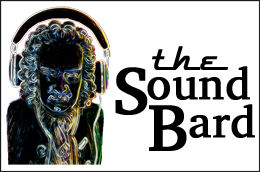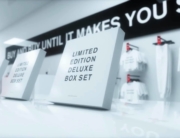BY MIKE METTLER — JANUARY 1, 2021
Letter From Isolation Row: How did I spend my quarantine year? I doubled down on my audio consumption by tapping into a rich vein of fresh analog and digital delights worth multiple repeat spins and streams. Interestingly enough, pretty much every album title on this list could also serve as a succinct statement on the year that was (not was).
Whether you choose to consume your music via top-shelf streaming services, high-grade 180-gram LPs, hi-res audio downloads, standard-issue CDs, and/or full-on 5.1 surround sound mixes, this past year delivered a wonderfully wide wave of full-length aural wonders. In reverse order, here are The SoundBard’s Top 31 long-players of 2020. Although I remain entrenched on Isolation Row for the foreseeable future, my ears are anything but restless.

31. AC/DC: Power Up. Columbia. There was something to be said for accessing as much magical music as humanly possible to soothe the mind, body, and soul equally in 2020, and AC/DC stepped into the breach to serve us up quite a heaping helping of much-needed sonic comfort food with their 17th studio album, Power Up. It’s a clear renewal of the hard-rocking form that made these veteran Aussie ballbreakers great in the first place. Power Up features the return of banshee lead vocalist Brian Johnson, the signature crunch of whirling-dervish lead guitarist Angus Young, and the rise of rhythm guitarist Steve Young, stepping in fulltime for his nephew, the late rhythmic riff icon, Malcolm Young. From the fist-shaking snarl of “Realize” to the harmonic thrust of “Shot in the Dark” to the high-voltage hijinks of “Code Red,” AC/DC remind us that rock & roll ain’t ever gonna be noise pollution. More Power to ya, mates.
“Shot in the Dark” YouTube link: https://www.youtube.com/watch?v=54LEywabkl4
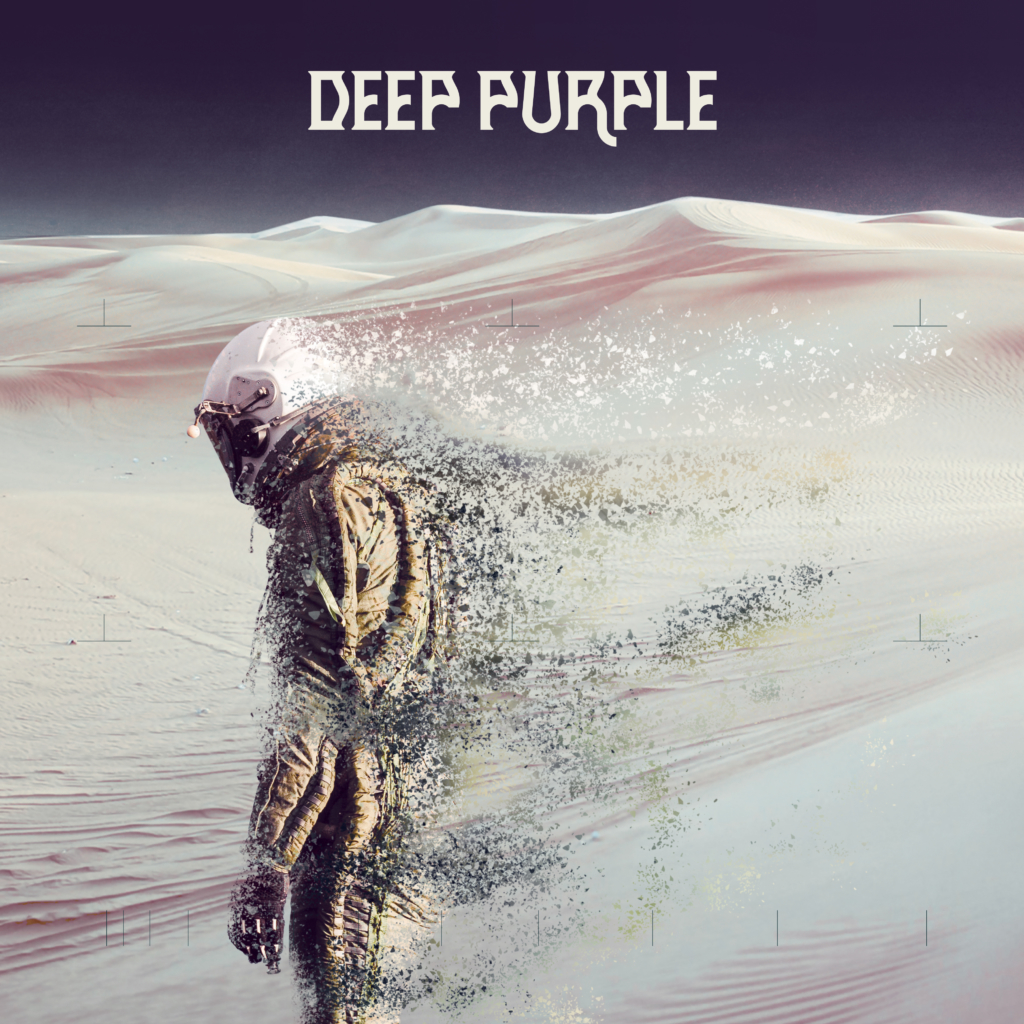
30. Deep Purple: Whoosh! earMUSIC. Veteran bands can either choose to continue mining the same vein on each album release, or stretch their finely honed musical muscles to come up with something refreshing that continues to build on their legacy. Lucky for us, British hard-rock legends Deep Purple chose the latter route for Whoosh!, thanks in part to their ongoing synergy with producer Bob Ezrin (Pink Floyd, Alice Cooper), who once again gathered the Purple team together in his Nashville studio, pre-pandemic. Mind-expansive tracks like the dramatic earthbound lament “Nothing at All” and the mini, three-part space odyssey “The Power of the Moon,” “Remission Possible,” and “Man Alive” all show Purple doing what they do best, to the nth degree. “I don’t think we ever take ourselves seriously to the point where we lose humor,” DP bassist Roger Glover told me back in July. “Rock music doesn’t have to be aggressive and nasty and dirty and doomed, you know? We try to have wit, and interesting lyrics. And we work hard on the lyrics.” Whoosh! drives an intriguing aural vacuum that puts the exact right amount of sonic space between your ears.
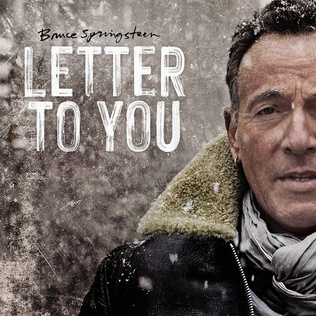
29. Bruce Springsteen: Letter to You. Columbia. Bruce Springsteen has always been an artist who unabashedly straddles the fine line between embracing the nostalgia of rock & roll’s initial glory days with a deep desire to take the artform to new heights through sheer will and grit (alongside a large dollop of unflinching talent). Bruce’s core creative intentions are none more apparent than on Letter to You, his first full studio album featuring lifelong blood brothers and sisters, The E Street Band, since 2002’s still poignant The Rising. Right out of the gate, the acoustic lament of “One Minute You’re Here” starkly addresses the fragile state of the here and now, while also hearkening to feelings both spoken and unspoken. “One minute you’re here / The next minute you’re gone,” Bruce intones with a voice tinged with age and experience (and the exact right amount of echo). The E Street Band show why they remain such a celebrated cohesive performing unit on tracks like the fiery rock history lesson of “Ghost,” while The Boss dips into his early-’70s trick bag by updating Dylanesque word feasts like “If I Was the Priest.” Bruce Springsteen embodies the heart of rock and soul, and he’s laid it all quite bare with this most explicitly personal Letter to each and every one of us.
“One Minute You’re Here” YouTube clip: https://www.youtube.com/watch?v=s-RT3nxr3T4
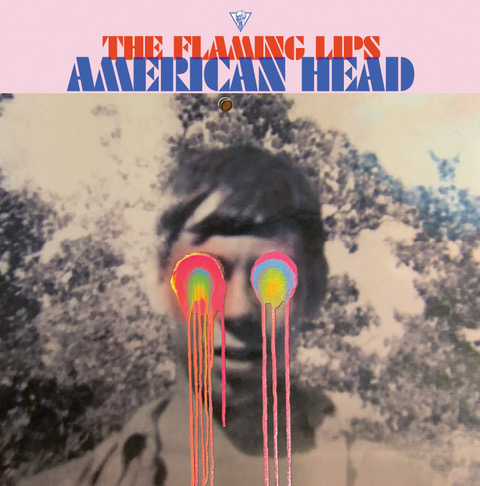
28. The Flaming Lips: American Head. Warner Records. These always explorative Oklahoman dreamtrippers have truly created their own aural bubble, both literally and figuratively, on American Head, their 16th studio album. Frontman Wayne Coyne approaches each song with a childlike wonder touched by a deeper awareness of the daily perils surrounding us, very much thanks in no small part to his collective mindmeld with creative partner Steven Drozd and producer David Fridmann. “I was young yesterday / but now everything has changed after today,” Coyne sings quite ethereally on the acoustified lament of “Assassins of Youth,” while country superstar Kacey Musgraves adds her considerable pipes to the heady sunflower guilt trip of “God and the Policeman” and “Will You Return / When You Come Down” captures the vibe of what would happen if Brian Wilson and Syd Barrett met the Lips in a spectral recording studio floating above planet Earth. Go directly to the Head of the class, gents.
“Assassins of Youth” YouTube link: https://www.youtube.com/watch?v=8j28LZbD_

27. Paige Cora: Instant in Time. Virtual Label. For 32 riveting minutes, Canadian singer/songwriter Paige Cora siphons her appreciation for the likes of Kate Bush, Tears for Fears, and Joni Mitchell into clever, piano-based arrangements that forge an intimate aural cocoon around her visceral storytelling. In short, Instant in Time chronicles the arc of a budding artist wise beyond her performing years. The triad of time-signature changes and supplemental cello riffs that permeate the somber opener “Bicycle Bells” buttress a hopeful lyrical tack in the face of unexpected tragedy. Elsewhere, the title track’s cool indie vibe burbles atop a bed of African-bred rhythms, while her continually extended vowels in key phrases like “holding on” and “stake your claim” in “Facing the Grass” only add to its ethereal emotionality. “Finding not just the vocals but the chords that are open and have some sort of beauty or euphoria to them is a big part of how I write,” she told me earlier this year. “I believe it’s a very fine art to find a word that serves the melodic sound and tone of the writing.” Paige Cora has chosen the exact right Instant to blossom into a vital talent to absorb.
“The Good Side of Desire” YouTube link: https://www.youtube.com/watch?v=yRsw3QHknF8
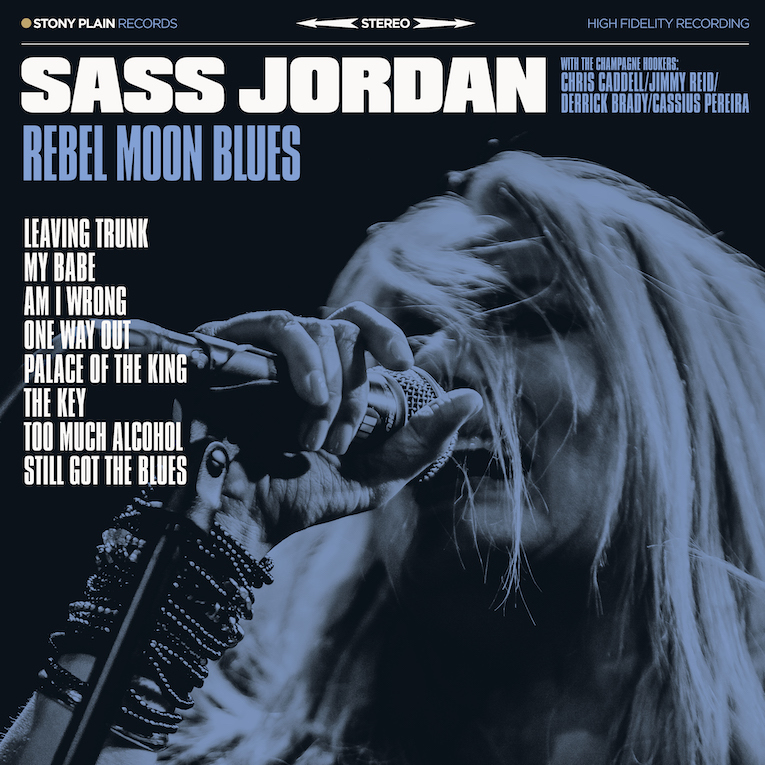
26. Sass Jordan: Rebel Moon Blues. Stony Plain. Seasoned Canadian songstress Sass Jordan more than lives up to the spirited nature of her first name with her latest impassioned offering, Rebel Moon Blues. Not one whiskey-tinged breath is wasted in conveying the appropriately distilled blues essence of all eight masterfully chosen cuts (seven covers, one original) over the course of a quite economical 33 minutes. Throughout Blues, Jordan maintains command of her gravelly range, adding numerous in-the-moment oohs, aahs, and hahs in all the instinctively right places. A somewhat ominous coughing jag opens the funkified lead track, Sleepy John Estes’ “Leaving Trunk,” while gritty harmonica flourishes from Steve Marriner strike a keen balance between Paul Butterfield and Norton Buffalo (Steve Miller’s late, great right-hand harp man), none more authentically so than on Willie Dixon’s “My Babe.” Pure magic emerges off the killing, er, studio floor when Jordan’s live vocals intuitively intertwine with Chris Caddell’s gnarly dobro slide riffs on “Too Much Alcohol,” the uber-prescient J.B. Hutto confessional made famous by Rory Gallagher. And “The Key,” the lone original co-written by Jordan and her producing partner/significant other, Derek Sharp (a.k.a. D#), sensually swoops and sways with maximum torque. Ain’t no doubt: Sass kicks major gluteus max.
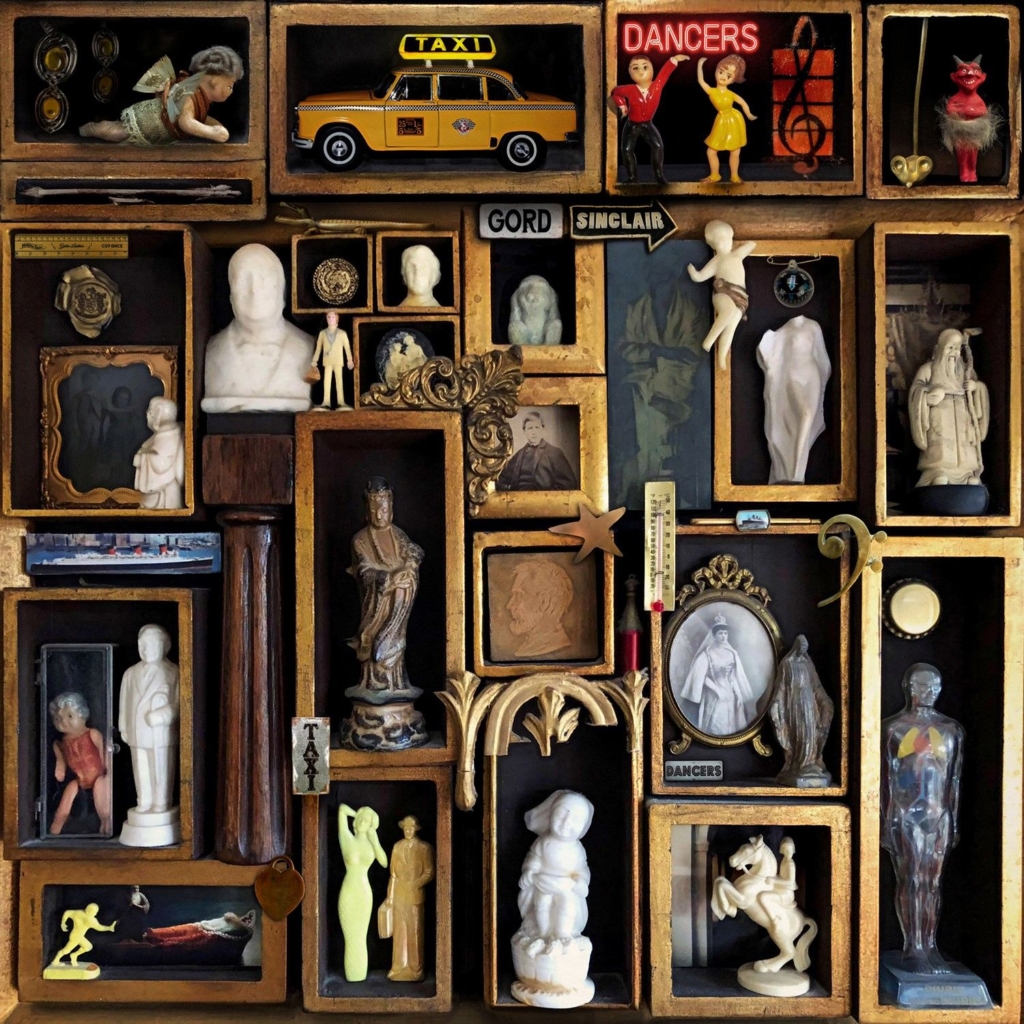
25. Gord Sinclair: Taxi Dancers. Autumnera. Finding the wherewithal to harness any level of creativity following the passing of a beloved bandmate is a daunting task for any musician, let alone for anyone who shared stage, studio, and deep personal interconnectivity with someone looked upon as nothing less than a national treasure. All of that added weight makes the magic that is Taxi Dancers, the first solo album from The Tragically Hip bassist Gord Sinclair, more than a welcome surprise. Dancers is stacked with ten masterfully played and finely composed aural confections, buttressed by a level of top-shelf production savvy Sinclair honed through years of being behind the boards for a number of younger artists — not to mention the decades he spent serving as the late Gord Downie’s harmonic foil alongside his key operating role as The Hip’s backline rhythmic anchor. “In the Next Life” is a touching love letter to an unyielding brotherhood unbroken by the limitations of our ever-fragile physical tethers (belied by perfectly placed delicate piano accents), while “Get Back Again” is a ringing acoustic-driven endorsement of standing on one’s own two feet in the face of strife. Meanwhile, “It’s Already Too Late” churns and sways with a familiar grooving confidence, duly backed by some seriously savvy cymbal work. A triumphant album armed with equal parts grace, will, and determination, Taxi Dancers is well worth hailing.
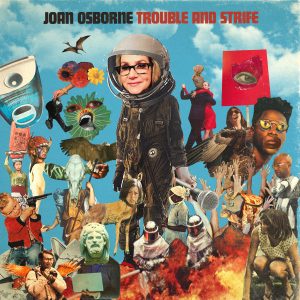
24. Joan Osborne: Trouble and Strife. Womanly Hips/Thirty Tigers. All 10 songs on Trouble and Strife, Joan Osborne’s 10th studio album, tackle the ills of the day in a style that’s more inviting than it is didactic. Whether it’s the echo-laden prime directive of “Hands Off,” the smoldering downhome shuffle of the title track, or the seductively sly singalong rebuke of “That Was a Lie,” Trouble and Strife puts you in the room right next to Osborne and her ace musician team as they add all the right sonic spices to Osborne’s topic-driven song recipes. If anything, the overall close-knit feel of Trouble and Strife achieves Osborne’s goal of inclusionary universality. “Particularly in a time like this, music has a job to do,” Osborne told me back in July. “Music has these particular characteristics that allow it to express ideas and give people a voice to add to the dialog of the moment. But it also has the ability to lift us up and keep us connected to a sense of energy and hopefulness. If you can keep this idea in mind — that there is a brighter day ahead — you can stay connected to the joy that music feeds. And then you have the energy and the ability to create the kind of changes we need to make.” And that’s just the kind of good Trouble we can all get behind.
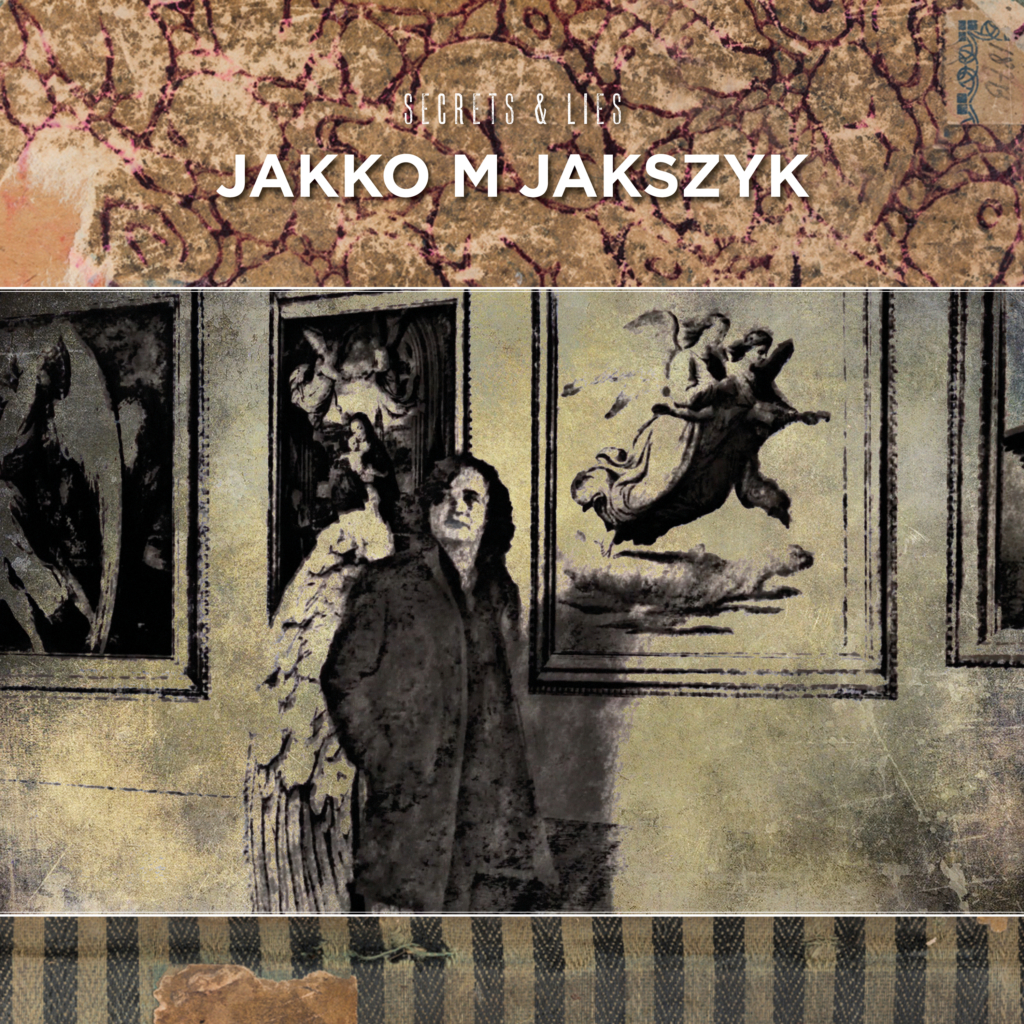
23. Jakko M Jakszyk: Secrets & Lies. InsideOut Music. A rich sonic tapestry interwoven with all of Jakko M Jakszyk’s far-reaching musical interests on display, Secrets & Lies goes well beyond the celebrated progressive-leaning tendencies of this ever-dexterous British guitarist/vocalist. (See the Celtic-tinged flavorings of “Trading Borders,” for starters.) Three of its tracks — the aurally challenging troika of “Separation,” “Uncertain Times,” and “Under Lock and Key” — emerged from writing sessions with his bandmates in King Crimson, while the bulk of the album’s laid-bare content cuts a pretty deep swath into the artist’s personal life. Plus, the overall impact of Secrets is further enhanced by way of Jakszyk’s wholly immersive surround-sound mix. “I found out lots of stuff about my personal background I didn’t know, meaning that the narrative, and the reality, were two different things. That’s why I called the album Secrets & Lies, because it seems to be a running theme in so much of our lives,” Jakszyk told me back in September. “I also feel I’ve been so lucky that I’ve ended up working with all of my childhood heroes. It’s like this mad, childhood dream matrix came true.” Jakszyk isn’t afraid to dig into his personal dirt to emerge with endless sonic gems — and that ain’t no Lie.
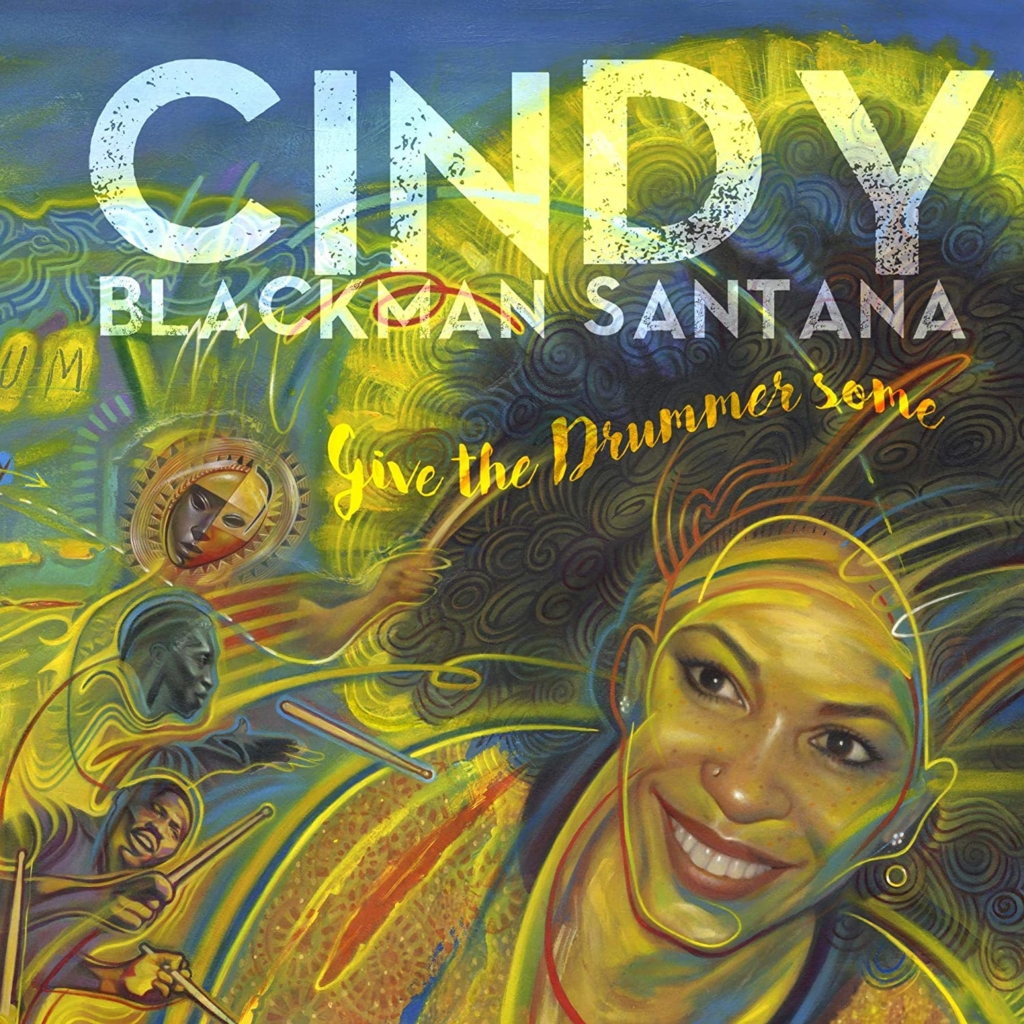
22. Cindy Blackman Santana: Give the Drummer Some. Copperline. Cindy Blackman Santana has long proven her mettle behind the drum kit for the likes of Lenny Kravitz, Ron Carter, Joss Stone, and her most significant other, Carlos Santana. But on her new album, Give the Drummer Some, Santana opted to up the creative ante by singing lead vocals on nearly half of its 17 tracks. She also rolls out the red carpet for spotlighting stunning guitar moments from John McLaughlin (furiously fulfilling the titular directive of “We Came to Play”), Kirk Hammett and Vernon Reid (trading many a fiery lick on “Evolution Revolution”), and the aforementioned Carlos Santana (serving up masterstroke improv riffage lessons on “Twilight Mask”). Meanwhile, Santana’s own kit skills shine steadfast and true on deep-rooted cuts like the jazz-inflected “Miles Away,” the fusion-infused “Velocity,” and the percussive powerhouse “Mother Earth.” The drummer also ensures her lead vocals on the heartfelt and quite timely cover of John Lennon’s “Imagine” and her joyful scatting on “Everybody’s Dancin’” carry equal weight. “I have to be honest with what I’m doing — and it’s all about the honesty for me, you know?” Santana told me back in September. “This is how I get to offer up my heart.” Given all the musical doors opened and walked through on this album, it’s clear that the next time Cindy Blackman Santana decides to explore her solo path, she’s fully prepared to give the drummer some more.
“We Came to Play”: https://www.youtube.com/watch?v=GLlfNVvyHOU
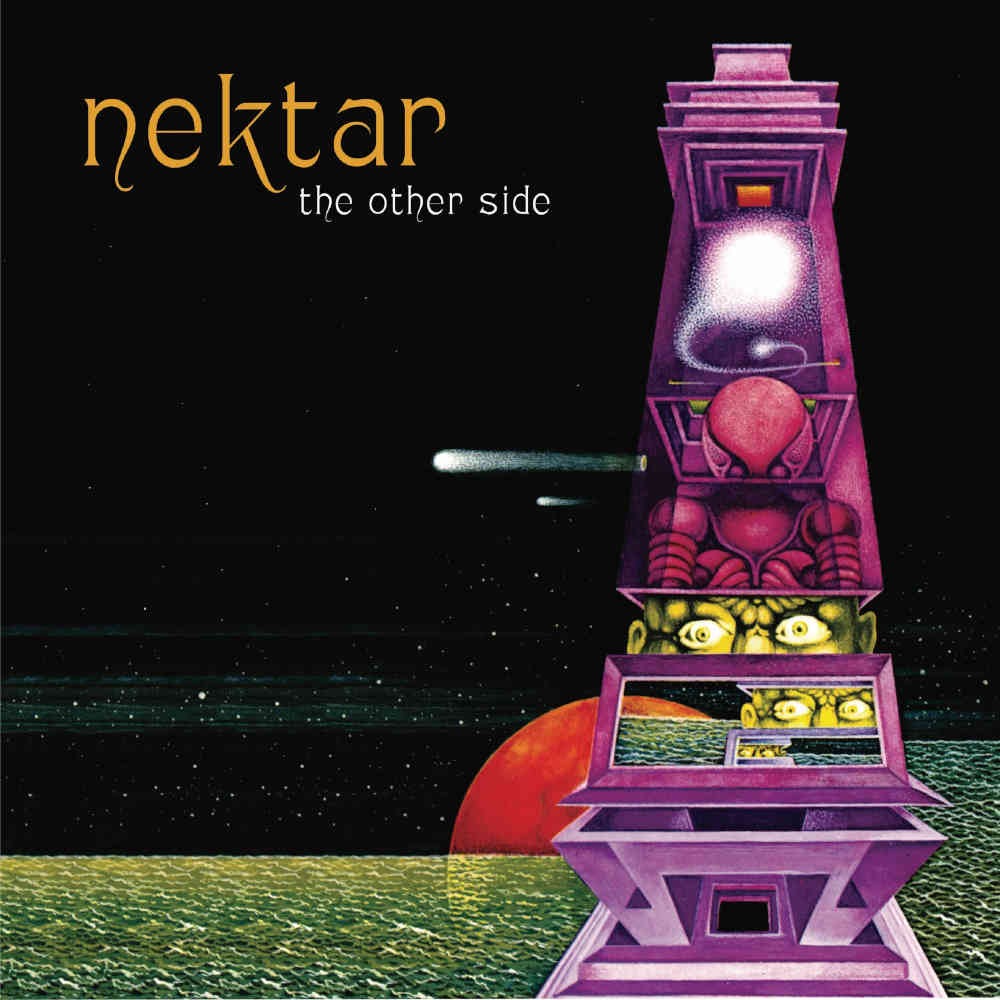
21. Nektar: The Other Side. Esoteric Antenna. While Nektar have certainly seen their fair share of soaring orbits and downward trajectories all throughout a storied career that now spans 50 years and counting, this top-shelf UK progressive collective roars back into the breach with The Other Side, a concept album about one man’s journey to, well, the other side, and (hopefully) back. From the sensually charged “I’m on Fire” to the 17-minute spiritual journey of “Love Is/The Other Side” to the acoustic-tinged reflection of “Look Thru Me,” the sheer sonic breadth of The Other Side reminds us prog heads why Nektar have always sounded so sweet. “I had a distinct path for the music, and I knew exactly what I wanted to do with it,” founding bassist/vocalist Derek “Mo” Moore told me back in March. “I like the music to flow, and that’s how this album is. When music is compressed, there are a lot of things that wind up missing with the oversampling — and there’s nothing missing here.” Indeed, the aurally challenging scope of The Other Side checks all the right mind-expanding boxes — not only in terms of the sheer breadth of Nektar’s forward-thinking compositions, but how they continue to reset the bar for approaching cosmic-leaning subject matter for any ensuing concept albums that will follow in their own Milky Way-bound wake.
“Skywriter” YouTube link: https://www.youtube.com/watch?v=H-GS_RBHvjo
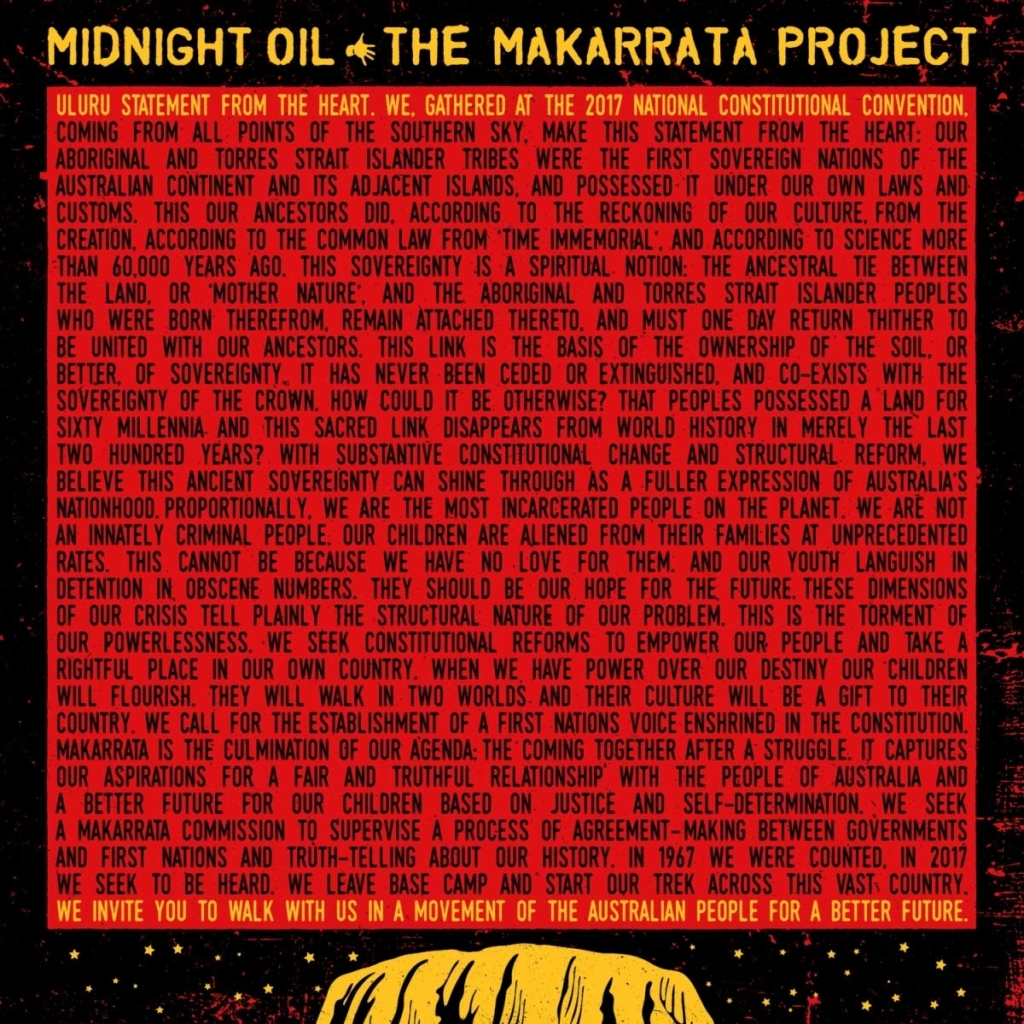
20. Midnight Oil: The Makarrata Project. Sony Music Australia. Midnight Oil music has always been synonymous with documenting the veteran Australian band’s uncanny ability to transform activist-leaning subject matter into fist-pumping singalong anthems. The Makarrata Project, the post-punk Aussie alt-rockers’ first studio effort since 2002’s harmoniously galvanizing Capricornia, only adds to that noble Down Under tradition. A 33-minute mini-album collaboration between the Oils and more than a dozen Indigenous and First Nation artists, Makarrata blends the ardent lead-vocal approach of lightning-rod frontman Peter Garrett with a score of uplifting native tongues. “Gadigal Land” lays out Garrett’s clear to-don’t list, buttressed by powerhouse drummer Rob Hirst and the instinctively intertwined chug-and-charge of guitarists Jim Moginie and Martin Rotsey, perhaps the most underrated axeman tandem of the past four decades. Moginie’s no slouch on piano either, as witnessed by his thoughtful keyboard accompaniment on the delicately seductive “Change the Date.” The tender, acoustified wishlist of “Uluru Statement from the Heart / Come on Down” combines a rightly unbending ancestral directive with a vocally sympatico invitation to unite forces on all sides. Worth seeking out via import, The Makarrata Project reinforces why the Oils embody the conscience of Australia by balancing on the tightrope of championing political beliefs without compromising musical passion. (In loving memory of the late Oils bassist Bones Hillman, who passed away from cancer on November 7, just a week after this album was released.)
“Gadigal Land” YouTube link: https://www.youtube.com/watch?v=wuWgE-u4keg
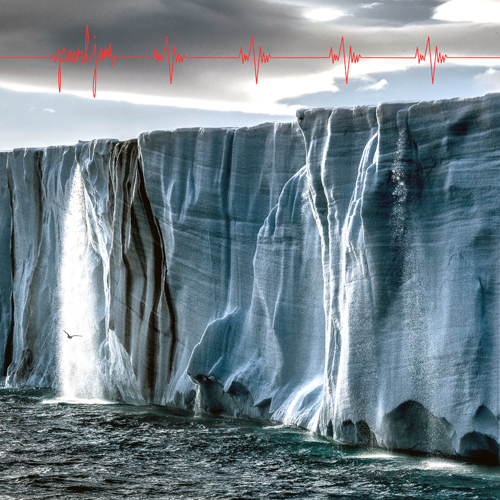
19. Pearl Jam: Gigaton. Monkeywrench/Republic. It may be 7 years gone since 2013’s ear-searing Lightning Bolt — and almost 30 years after their genre-defining debut, 1991’s alt-rock masterwork Ten — but Pearl Jam haven’t lost a microstep with Gigaton. Here, all their Seattle-bred strengths are magnified anew. Eddie Vedder’s signature vocal quaver remains steadfast, from the slowburn hiccupped holler that leads into Mike McCready’s breakneck left-channel guitar solo on “Superblood Wolfmoon” to the gentle tone on display all throughout the dreamy, emotionally protective “Buckle Up.” The funky/synthy groove of the mystical “Dance of the Clairvoyants” chronicles what would happen if Nile Rodgers produced a David Bowie/Roger Daltrey mashup, while drummer Matt Cameron’s toms, bassist Jeff Ament’s kalimba, and Vedder’s own ominous pump organ add aural gravitas to the album-closing elegy, “River Cross.” Elsewhere, the harmonically blended headbangers thrust of “Take the Long Way” highlights the mind-melded guitar tandem of McCready and rhythm groove king Stone Gossard. The red EKG pulse line that extends eastward from the album cover’s scrawled-out title aptly reflects the lifeblood inherent in Gigaton’s grooves, especially in its 180-gram vinyl form — yet another fine testament to how committed Pearl Jam are to the M.O. of creating idyllic sonic evenflow.
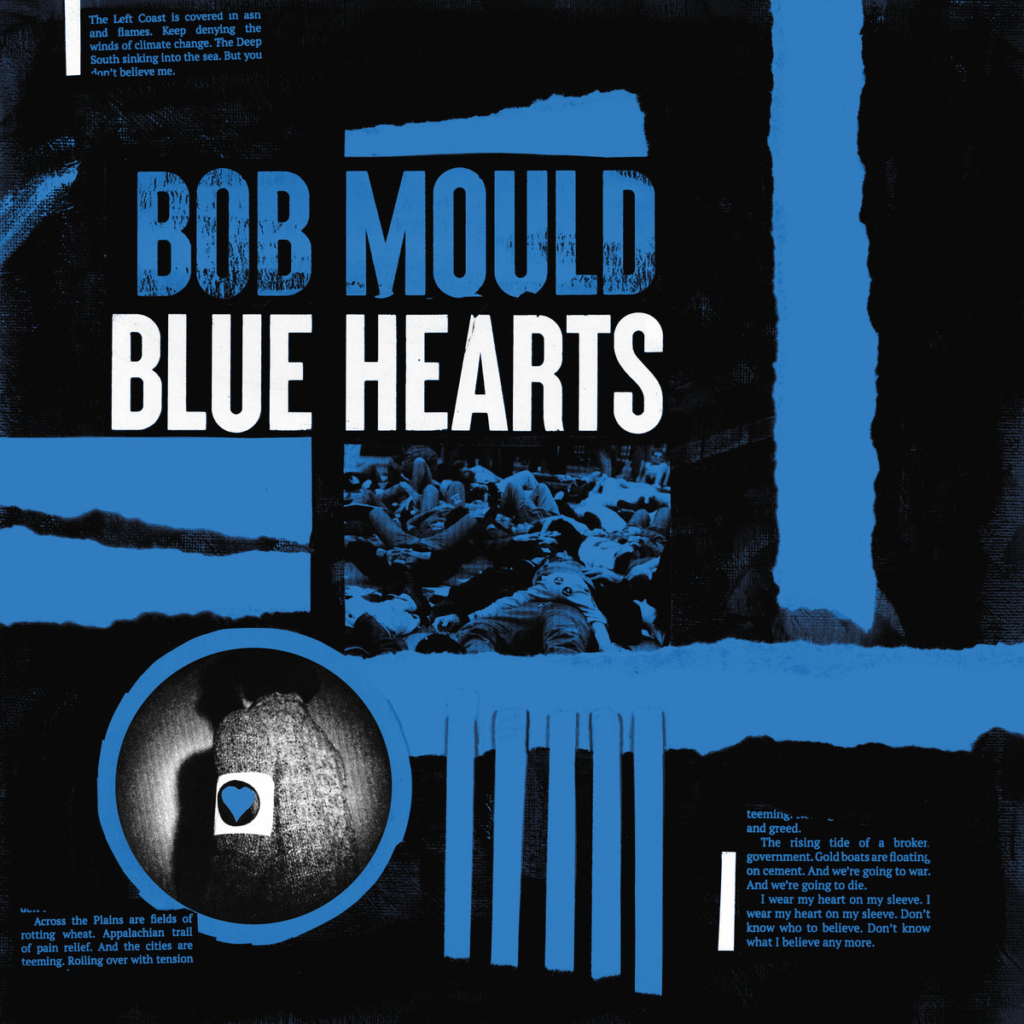
18. Bob Mould: Blue Hearts. Merge. Is it really that hard to believe proto-punk rocker-cum-songwriting iconoclast Bob Mould has reignited the protest flame on his 14th studio album, Blue Hearts, with no let up in sight? Following an acoustified prelude (the trajectory-foretelling opener, “Heart on My Sleeve”), the 13 remaining tracks of Blue hearken back to the vitriolic aural blueprint Mould laid down on 1990’s relentlessly punishing Black Sheets of Rain. Mostly spewed out in 2-minute-long bursts, Blue Hearts threads the as-yet-unresolved discontent of our present day with the seething underbelly of the social unrest of the mid-1980s — which Mould and Hüsker Dü tackled unapologetically head-on during that acclaimed Minneapolis trio’s Reagan-era prime. The one-two kidney punch of “American Crisis” and “Fireball” thrash and burn with pummeling riffs galore — and the best guttural vocal caterwauling this side of the late Kurt Cobain. A clever, cleansing organ postscript at the end of “Forecast of Rain” briefly rinses out the palate before the carnage continues all the way through the final feedback-wash coda to “The Ocean.” You’ll likely need to adjust your volume knob accordingly to find the threshold of acceptable distortion, but make no mistake — Mould’s rage is as melodic as it is primeval. After 35 minutes of tumult, Mould’s manifesto is painfully obvious: Clear eyes, Blue Hearts, can’t lose.

17. Fleet Foxes: Shore. Anti-. Uncertain times call for unconventional measures — and that leads us directly to the impetus behind Fleet Foxes’ fourth release, Shore, which deliberately pinpointed the autumnal equinox as its initial, digital-only release date. (Physical versions of Shore are slated to drop in early 2021.) Recorded both prior to and during the pandemic, Shore is the indie-folk version of a meditation tape — but in a good way. Indeed, the overall cheery/breezy sonic palette FF frontman Robin Pecknold set forth for Shore defines a new subgenre I’ll call “uplift pop.” The gently finger-plucked “Featherweight” breezes by on a hopeful wave of almost-Frippian bliss, and the horn lines that buttress “A Long Way Past the Past” lay the groundwork for a refreshingly sung spiritualized invocation. The harmony blends during the dirge-like “For a Week or Two” evoke The Beach Boys-styled vocal stacking Lindsey Buckingham deployed for his early-1990s cover of The Kingston Trio’s “All My Sorrows,” while the piano-and-percussion groove bolstering “Quiet Air / Gioia” should dissipate any lingering listener anxiety. The 55-minute equivalent to putting a seashell next to your ear to access the calming effects of the ocean, Shore succeeds at stemming the underlying storms that continue brewing within us all. In essence, Fleet Foxes have enacted a deeper, zen-tastic 21st century upgrade to the yacht rock experience.
“Sunblind” YouTube link: https://www.youtube.com/watch?v=osz9DyfbjyQ
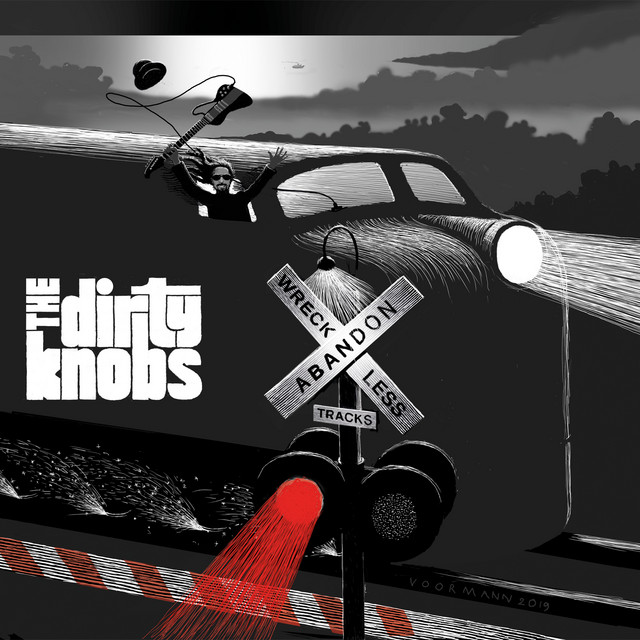
16. The Dirty Knobs: Wreckless Abandon. BMG. If any musician took Tom Petty’s passing in 2017 the hardest, it was most likely Mike Campbell, Tom’s lifelong righthand writing partner and lead-guitar conduit. Eventually, Campbell found some solace by joining the post-Buckingham touring version of Fleetwood Mac, but his is a special kind of muse that must roam free. Solution: Bring The Dirty Knobs, Campbell’s ragtag four-piece sideproject collective, to the forefront of his creative jones. No one will ever accuse Campbell of having as sweetly nuanced a lead-singing voice as Petty did — in essence, Mike is to Tom as Keith Richards is to Mick Jagger, albeit much, much less gargle-grizzled — but he sure gives good growl. The title track lays firm groundwork, with Campbell’s signature ringing Rickenbacker tone leading into a grooving shuffle that recalls only the best Petty-catalog aural journeys. Chris Stapleton joins the harmonic train on “Pistol Packin’ Mama,” while the snarly slider “F**k That Guy” is the best non-political kiss-off of the year. Overall, Wreckless Abandon reminds us of the irreplaceable sonic glue that Mike provided in The Heartbreakers, and it portends plenty of damn fine Campbell-jammable tracks to come. It’s a Dirty Knob, but somebody’s gotta turn it.
“F**k That Guy” YouTube link: https://www.youtube.com/watch?v=-nG6Q7MqVCo
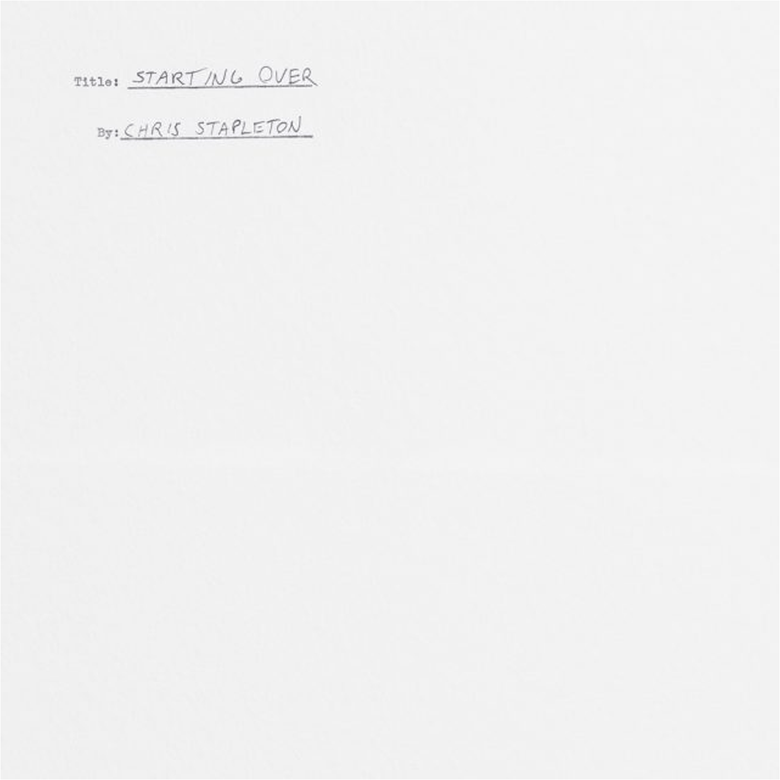
15. Chris Stapleton: Starting Over. Mercury Nashville. Artists who forge signature identities with their singular blending of voice and guitar have a way of leaving an indelible stamp on our collective ear and overall listening psyche, regardless of whether they do it acoustically or electrically (or both) — witness Bob Dylan, Joni Mitchell, James Taylor, and John Prine, to name but a few. Chris Stapleton is one such soul-ingrained artist — though his stellar 2015 debut album Traveller could have signified an early creative peak almost impossible to overcome. Instead, the Kentucky-bred singer/songwriter forged ahead with a pair of reflective From a Room volumes before landing squarely on Starting Over, a 53-minute examination of rebirth and redemption. All throughout stark tracks like the jangling cautionary look-back of “Devil Always Made Me Think Twice,” the full weight of the Robbie Robertsonesque canine elegy “Maggie’s Song,” and the rip-roaring, echo-laden snarling showdown of “Whiskey Sunrise,” Stapleton’s lived-in vocals seduce and enthrall in the way he extends vowel sounds within syllables to reveal character, contemplation, and hard-fought wisdom. Each cut is buttressed by just the right level of instrumental backing, whether it be subtly wafting organ fills, delicate brush-drum accents, or explosively gnarly guitar stabs. Bottom line: Starting Over is a damn fine jump-start for the next innovative phase of one damn special career artist.
“Starting Over” YouTube link: https://www.youtube.com/watch?v=A3svABDnmio
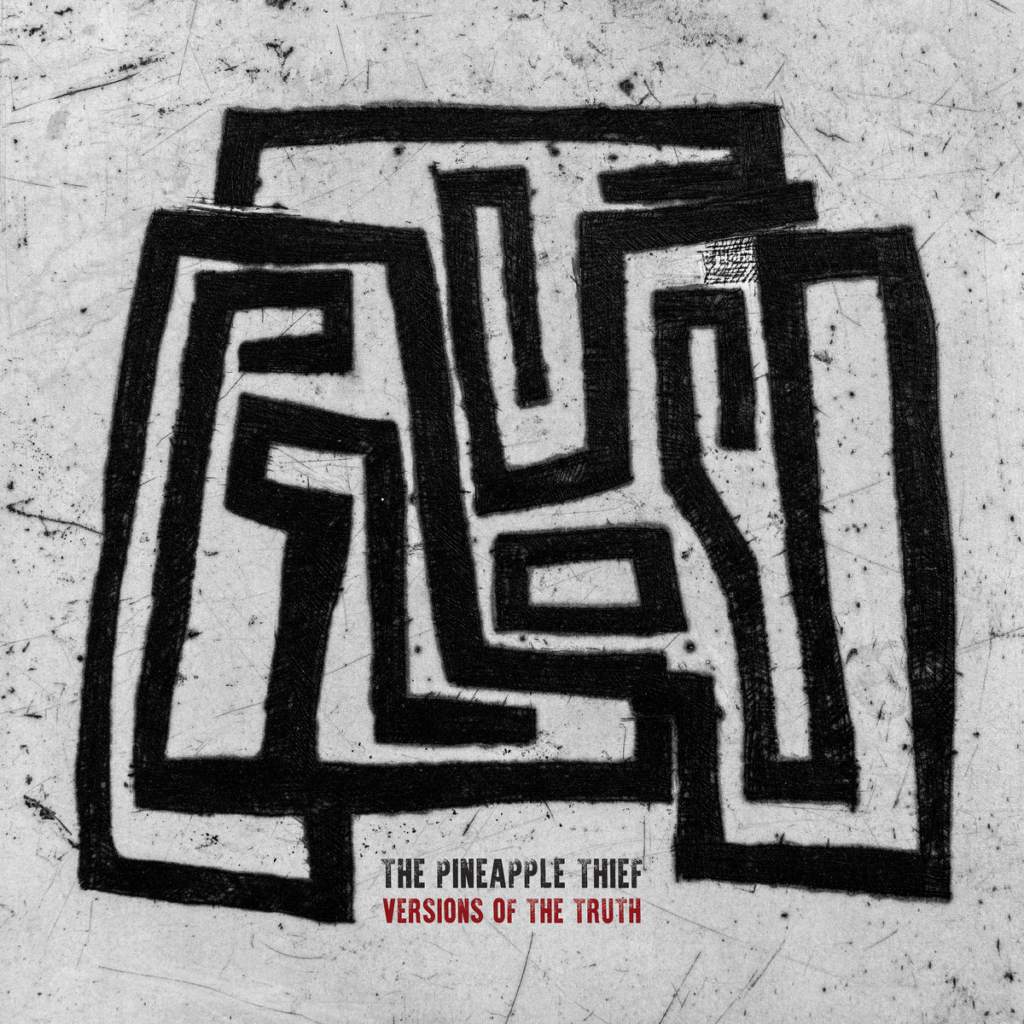
14. The Pineapple Thief: Versions of the Truth. kScope. British post-prog heroes The Pineapple Thief step into the darker shadows on Versions of the Truth, their third consecutive studio offering that incorporates the irrepressible contributions of ever-innovative powerhouse drummer Gavin Harrison (Porcupine Tree, King Crimson). Guitarist/vocalist Bruce Soord leads the charge into emotional rawness on the title track, outlining the inevitable trajectory of his descent. “It’s not how I remember it,” Soord repeats at various stages throughout the song, his shifting vocal inflections reflecting the arc of his downward spiral. “Demons” throbs with a foreboding underbelly, while “Driving Like Maniacs” commences with an all-encompassing choirlike wail before Soord and his delicate counter vocal contemplate personal sabotage together. It’s all properly supported and balanced by Harrison’s clever stickwork, which remains on fine display in the ’80s-inflected, seven-minutes-in-hell lamentations of “Our Mire” and the slow-build of the album-ending warning shot of “The Game.” Meanwhile, Harrison adds marimba to wind-twisting tracks like “Stop Making Sense,” a sonic flourish that’s even more powerfully effective in the 5.1 mix Soord did for the Blu-ray version of Truth — especially during the more explosive breaks in the aforementioned title track. As you follow Soord’s gripping arc of the art of falling apart, it’s hard to ignore the fact that, sometimes, the Truth just hurts.
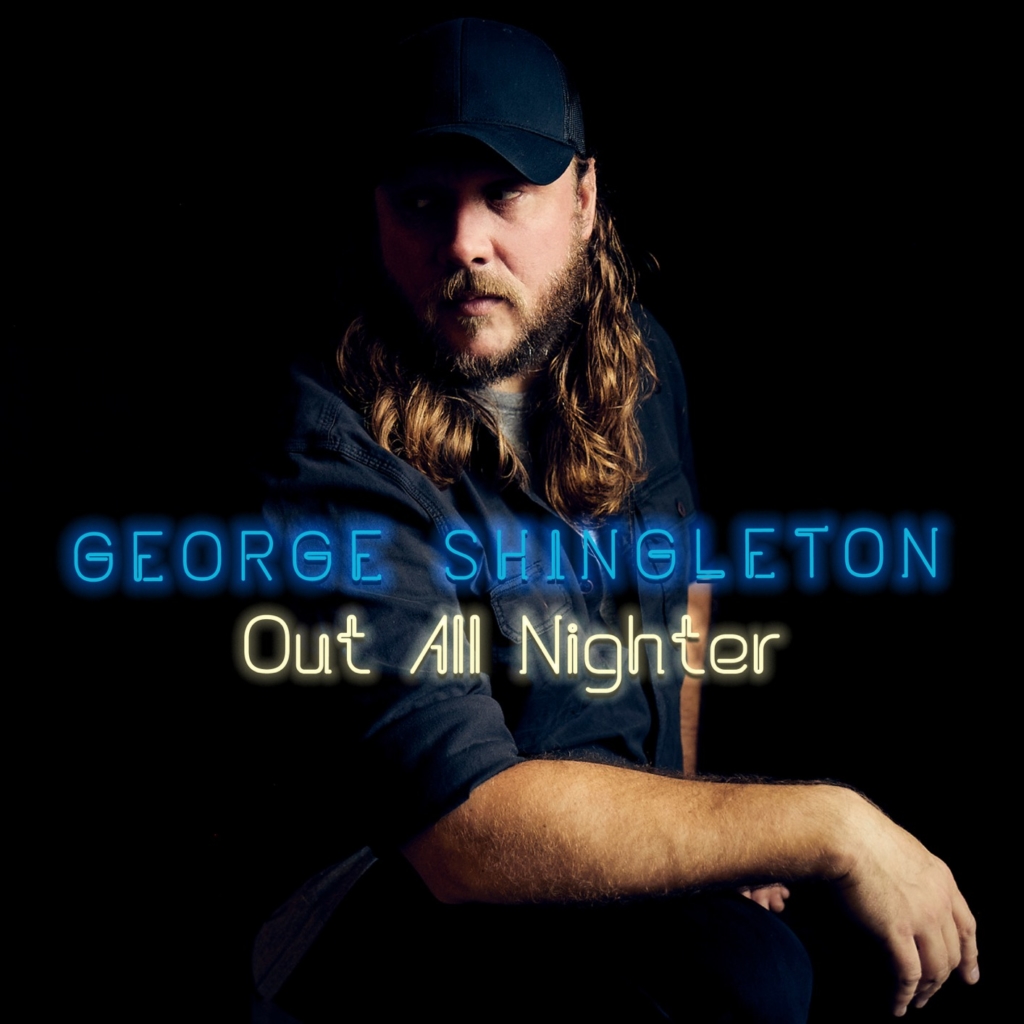
13. George Shingleton: Out All Nighter. Rock Ridge Music. We all have our inner demons to face, but rather than give in to his pain, Nashville-based singer/songwriter George Shingleton has instead wrangled his own internal good vs. evil wrestling match into a number of heartfelt songs infused with lived-in, whiskey-tinged vocals. Here on Out All Nighter, a digital-only album, Shingleton puts forth eight gutbucket country songs charged with chronicling the daily interpersonal push-pulls between sin and redemption. Bear witness to the confessional, pleading twang of “Handful of Hell,” the barrelhouse ramble of “Have a Good Time” (complete with a raucous honky-tonk chorus in its back half), the wink-nudge musician manifesto of “Guitars, Girls, Green Grass, and Guns” (which Shingleton and his bandmates sometimes refer to as “G to the Fifth”), and the album-ending, tender commitment affirmation of “I’m Gonna Be Your Man.” As Shingleton told me back in August, “I want to make people feel the emotions that I feel, whether they’re sad or happy. I just want to be authentic. And I’d much rather write songs that don’t always have the same three or four chords backed with a drum loop. Every song doesn’t need to sound exactly the same.” An open, rapturous spiritual awakening set to music, Out All Nighter is the kind of sonic friend you wanna stay up with together until the sun rises on a new day.
“Fire or Flame” YouTube link: https://www.youtube.com/watch?v=ddDzthbDCbA
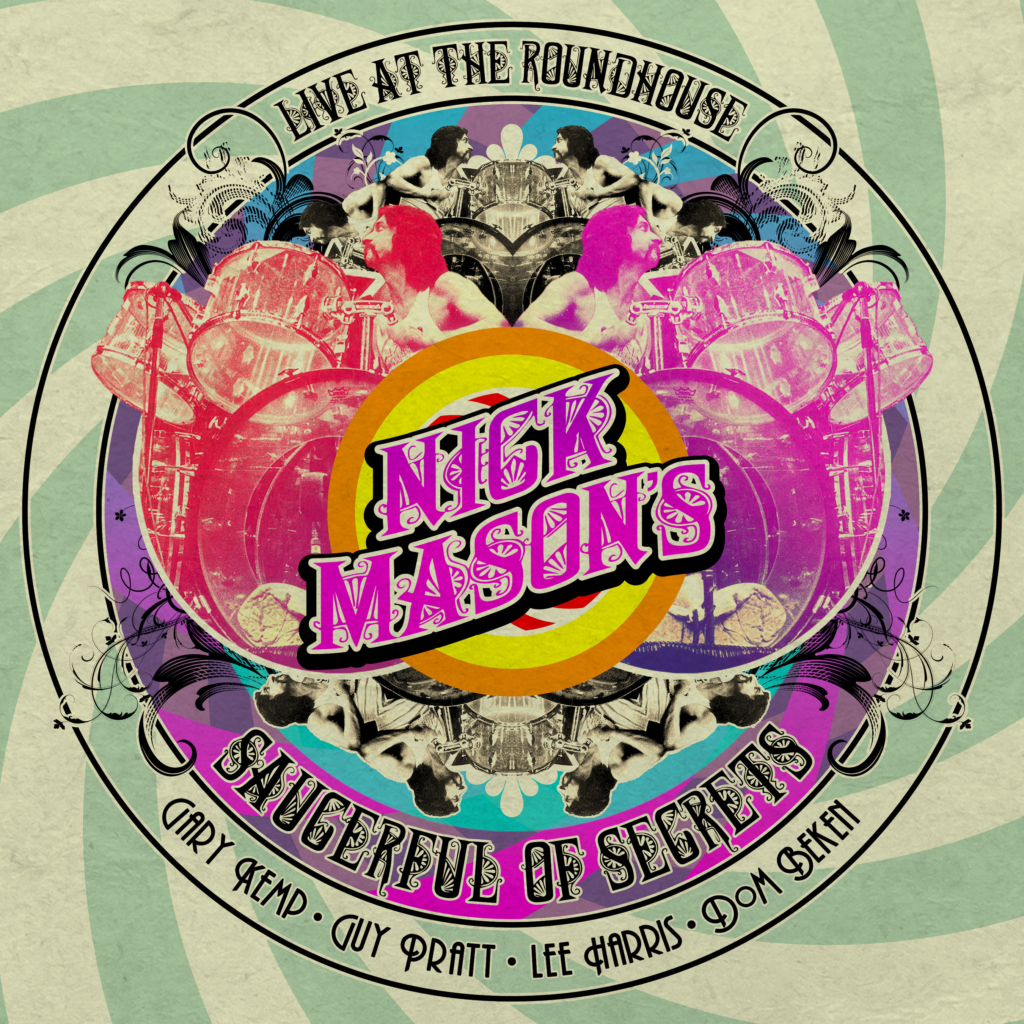
12. Nick Mason’s Saucerful of Secrets: Live at the Roundhouse. Sony. Co-founding Pink Floyd drummer Nick Mason’s top-shelf five-piece Saucerful of Secrets outfit is fiercely dedicated to only playing music from the iconic progressive band that was entirely recorded prior to their forever-iconic March 1973 masterpiece, The Dark Side of the Moon, meaning they focus many of their setlist lasers on the storied output of original Floyd guitarist/vocalist/visionary Syd Barrett. Live at the Roundhouse, which was recorded on May 3-4, 2019 — the same storied titular London venue where the mighty Floyd played one of their earliest large-scale gigs in October 1966 — chronicles a mind-blowingly invigorating 2-hour, 21-song set full of vintage Barrett-era songs, including the cat-scratch-feverish “Lucifer Sam,” the Kraftwerk template “Obscured by Clouds,” the underground Barrett solo track “Vegetable Man,” and Mason laying down a toms-and-gong drum clinic on “Set the Controls for the Heart of the Sun” among them. “The big thing was finally getting my hands on the gong after 40-odd years,” Mason told me about his handiwork on the latter track back in August, before he outlined the band’s overall intent. “It’s much like when you’re getting a photograph,” he continued. “When you know you’ve got it raw, you can then do anything you like with it. The main thing is making sure everything that was recorded was recorded at the best possible standard. As for Syd, frankly, I think any opportunity to bring out any artist’s work is doing them justice.” Ain’t no Secret here: Mason and his merry band of music-making men make damn sure their interpretive Floydian sounds resound in full.
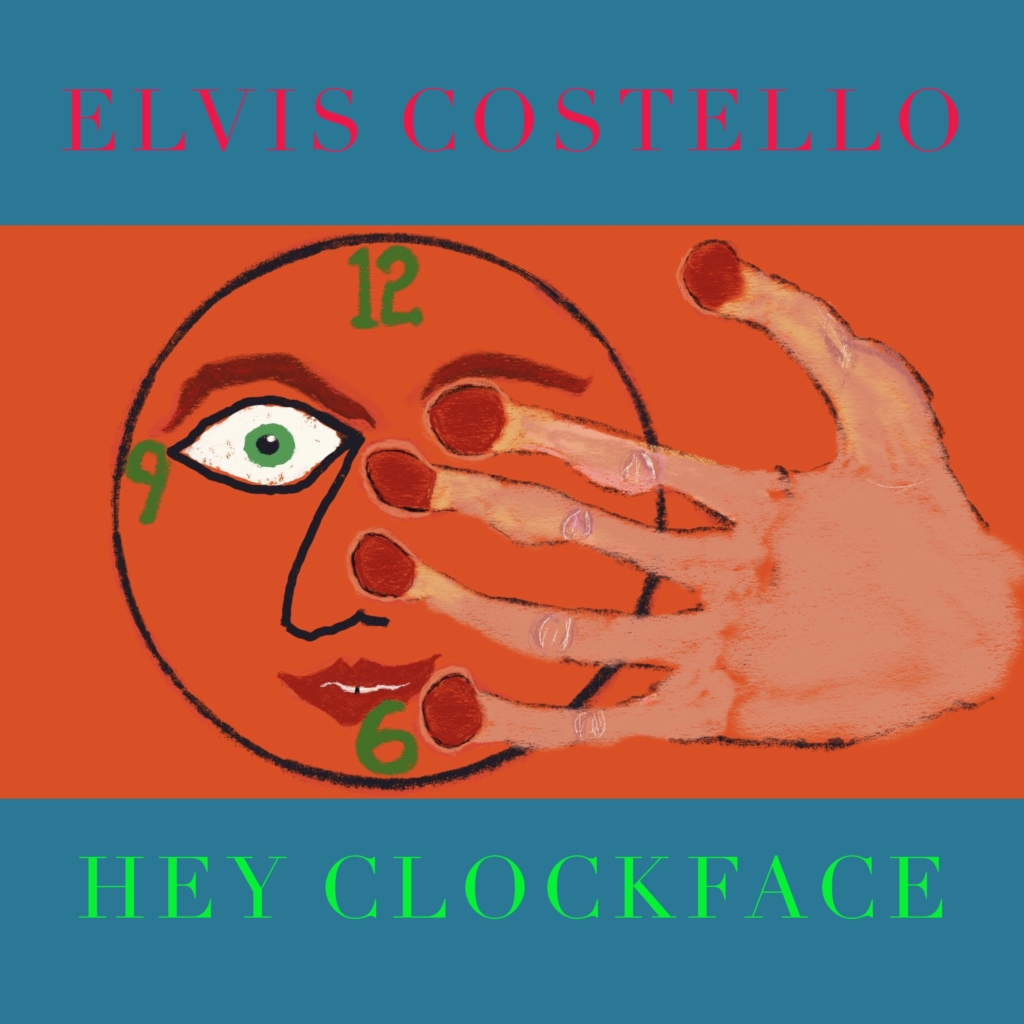
11. Elvis Costello: Hey Clockface. Concord. Elvis Costello is a sonic chameleon. From his late-1970s persona as a new-wave provocateur to his current role as an eclectic elder statesman who follows the muse of his ever-shifting musical moods, the main constant Declan MacManus has followed throughout his long, storied career has been one of evolution. Hey Clockface, his 31st studio album, continues with that transformative trajectory via a 50-minute genre-bridging smorgasbord of evocative sounds and expressive vocals — not to mention reinforces his inherent knack for clever song titles. (I’m looking directly at you, “Hetty O’Hara Confidential.”) The intimate yet open aural palette painted by Costello and co-producer Sebastian Krys, threaded across three intercontinental studio locales, puts the listener right in the room alongside the musicians with an estimable level of drum, percussion, and horn-section detail. The declarative sneer of “No Flag” ripples with spooky Fender Jazz basslines, snarly Fender Jazzmaster guitar tones, and swirling Hammond organ lines, all courtesy Costello’s own hands. The foreboding “Newspaper Pane” is a picture-perfect audio snapshot of observational despair, while “Radio Is Everything” is a spoken-word relief map for its cynical, world-weary narrator. Once again, Elvis Costello shows there’s a time and a face for exploring everything his fertile creative mind conjures.
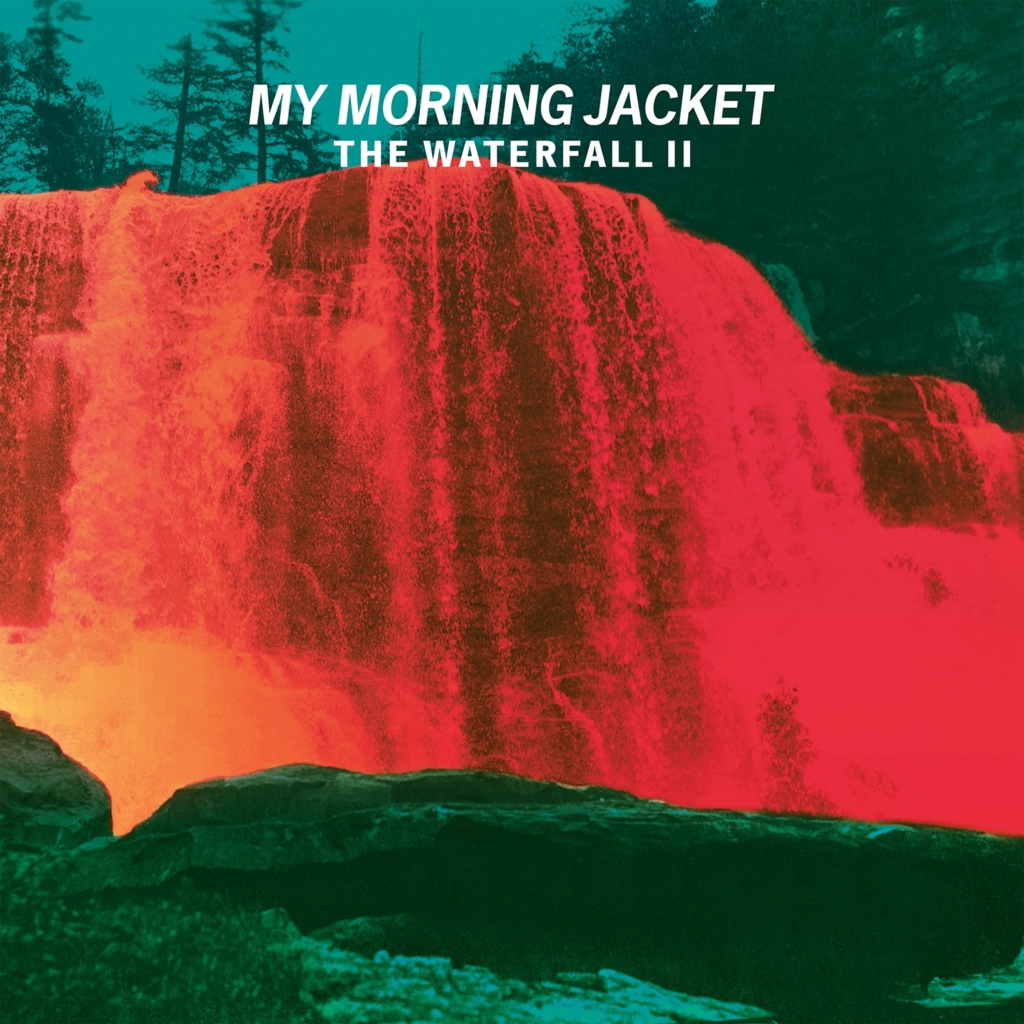
10. My Morning Jacket: The Waterfall II. ATO. Springboarding from the cocoon-like vibes of My Morning Jacket’s nature-enthralled 2015 effort The Waterfall, the resultant followup The Waterfall II is a stark reflection on collective isolation — not to mention a telling chronicle of the disintegration of interpersonal relationships in our pandemically challenged times. The mostly bright, fragile production palette — courtesy frontman/guitarist Jim James and Tucker Martine — could knock the entire Kentucky-fried band over with a fig leaf, but it’s the exact right comfort bed for ten tracks delineating unsettled, and unsettling, tension. James shows just how much he’s learned from the Roger Hodgson school of vocal emoting on the sensitively pleading piano ballad “Feel You,” while the funky slowburn of “Magic Bullet” ricochets to a finely controlled crescendo, buttressed by a recurring right-channel guitar riff that takes us right to the edge of the echo chamber. That said, the sneering “Wasted” sure lays waste to any attempt at subtlety. “I’ve been wrong for so long,” James sings ever-so-delicately at the outset of “Spinning My Wheels,” but he couldn’t be further from the truth regarding the spot-on content of this stirring sequel. The Waterfall II amply shows how MMJ continue to know how to grow with the flow.
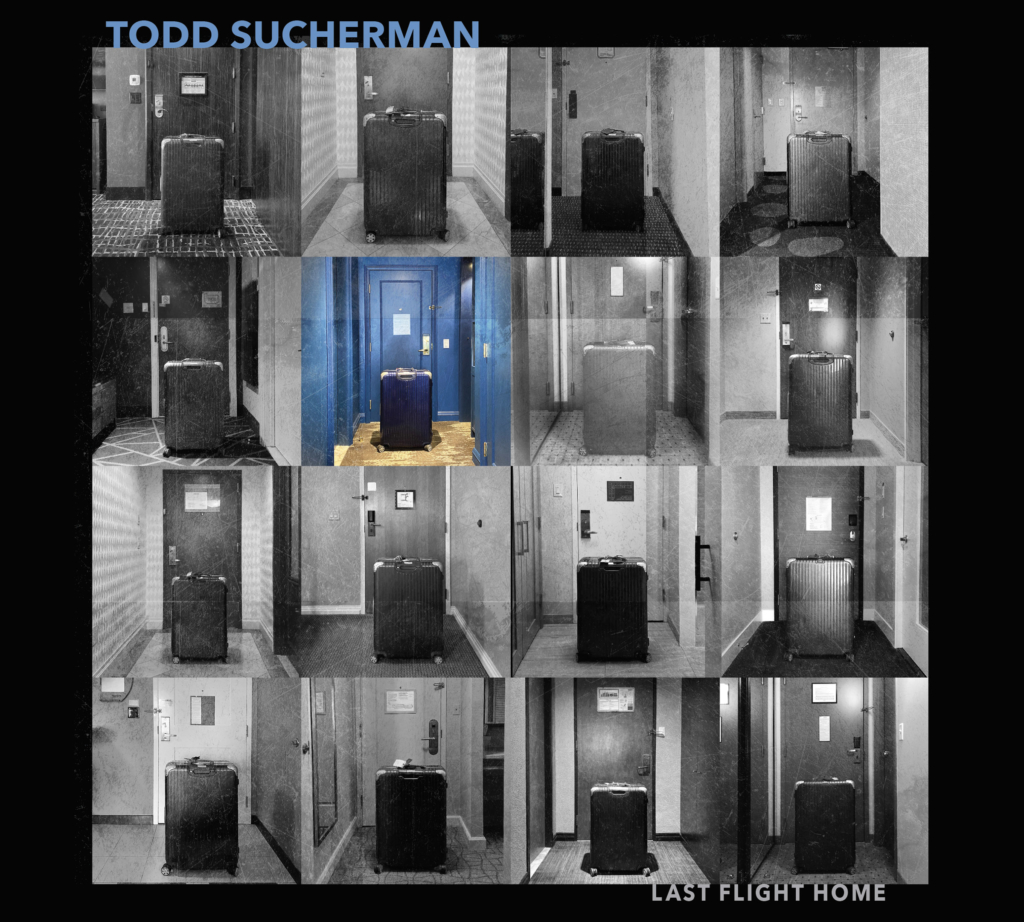
9. Todd Sucherman: Last Flight Home. Aqua Pulse. Who knew he had it in him? World-class Styx drummer Todd Sucherman stepped out from behind his formidable kit to sing all the lead vocals on his first solo album, Last Flight Home — in addition to ably handling all principal drumming duties and co-writing nine of the album’s ten songs — and, as a result, he came up with the most unexpectedly magical debut record of the year. Over the course of its very concise and well-sequenced 42 minutes, Last Flight Home soars mightily, from the universal longing of the title track to the grandiose, twisted orchestral circus vibe of “Ad Lib Everything” (buttressed by a majestic string section) to the heartfelt surrender of “It’s Perfection” (featuring angelic background vocals from Todd’s esteemed better half, Taylor Mills) to the edgier, self-inflicted carnage of “The Damage.” Back in April, Sucherman admitted to me that “this was literally something I always dreamed of doing, but didn’t know that I could do” before adding, “I’ve always loved singers, lyrics, and melodies. That’s more important than any drum histrionics to me. What’s drum stuff anyway if it’s not paired with music and works in a musical context where you’re choosing the right things to play on a song? For me, melody is the most powerful song element there is.” Last Flight Home is further proof that Sucherman’s inherent musical chops and respect for the pocket run deep and true, a fitting testament for a man who’s made a career out of serving the needs of the song at hand above all else. Sounds like Home to me.
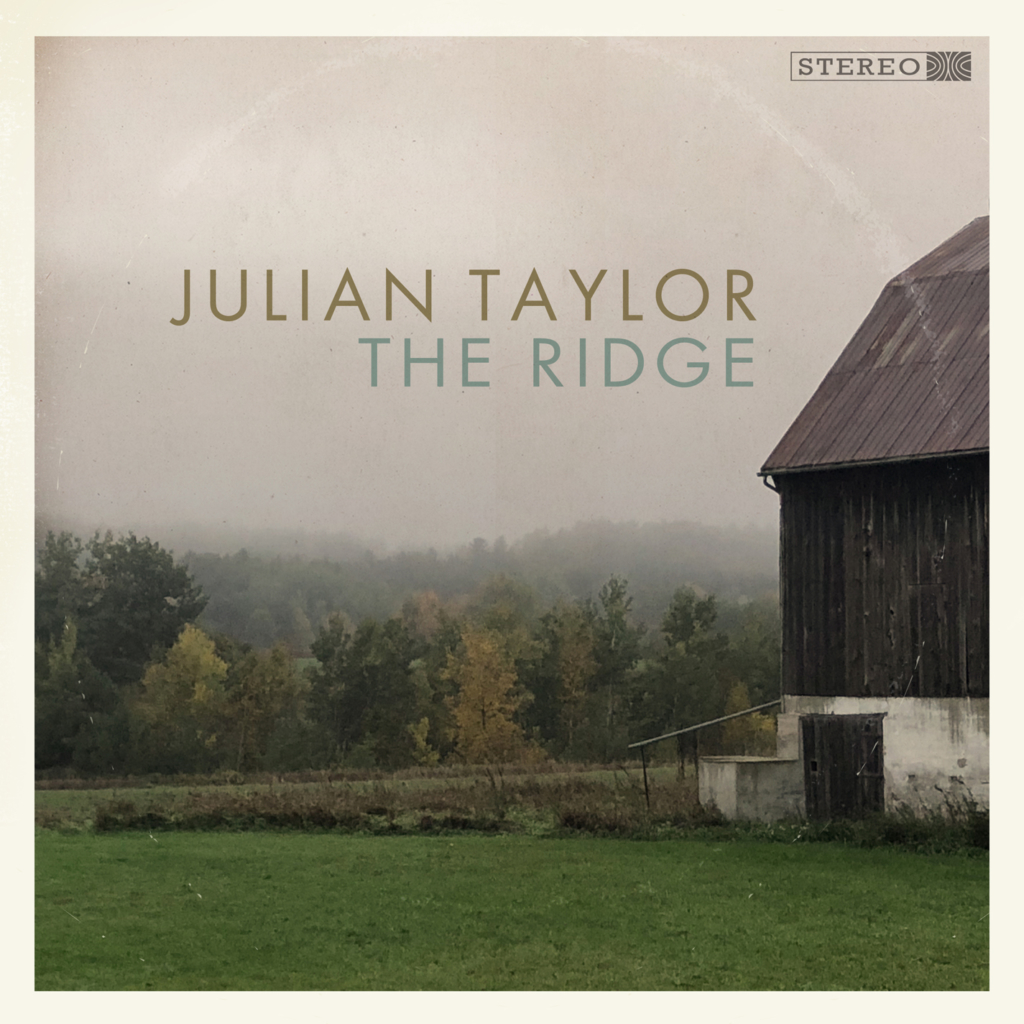
8. Julian Taylor: The Ridge. Howling Turtle. Toronto-based singer/songwriter Julian Taylor effortlessly transitions from soother one moment to soothsayer the next on his striking, eight-song solo effort, The Ridge. From the title track’s ruminations on the formative days spent on his step-grandfather’s farm in British Columbia to the hopeful swoon of “Over the Moon” to the tribal-energy landscape that permeates “Ballad of the Young Troubadour” to the Tex-Mex Canadian-Western vibe mashup of “Love Enough,” the honest, raw nature of The Ridge enables listeners a myriad of personally relatable entry points into Taylor’s enlightening narrative tales. Not only that, but “Human Race” finds Taylor shaping his own path beyond the intersecting songwriting crossroads of Mark Knopfler, Gordon Lightfoot, and Robbie Robertson. The artist’s inherently cinematic approach to his storytelling has a lot to do with his heritage and upbringing. “It’s an interesting thing to be part Mohawk and part West Indian, because I’ve always had this feeling that I never fit in anywhere,” Taylor told me back in February. “As a mixed person, it’s like, oh, where do you go, and how do you connect with people? That’s all I’ve been trying to do, and my life experience as a person who is mixed helps me do that. These stories are all coming from a person who tries to fit in, but doesn’t quite fit in. That’s really what my work has always been about — that longing to be a part of something.” Knowing all that, I’d venture to say The Ridge has been Taylor-made for listeners to connect with songs and stories they already know instinctively by heart.
“The Ridge” YouTube link: https://www.youtube.com/watch?v=hwm_7Aibh4M

7. Fiona Apple: Fetch the Bolt Cutters. Epic. Surveilling how certain artists continue to stretch and grow and challenge themselves long after they’ve established a persona in the musical arena at large can be a worthy, rewarding listening (ad)venture. Fiona Apple is one such fearless artiste (that ending “e” is very much intended), having moved well beyond the initial impact of the art-pop churn of “Criminal” and “Sleep to Dream,” two of the more galvanizing tracks from her 1996 debut, Tidal. Apple’s fifth album, economically titled (for her) Fetch the Bolt Cutters, continues to accelerate her singer/songwriter trajectory with a 13-song cycle that takes you on a sonically fulfilling journey that only deepens with each passing listen. The title track teems with an industrially inclined percussive backline, as Apple curls her sage voice around a litany of cutting observations, singing some of its verses true to songwriting form before careening through a free-flow verbal vortex in full-on attack mode (with a little help from some canine accompaniment in the back half). “Cosmonauts” burbles with a few dollops of ethereal hope, skyrocketing into a furious mantra before falling back to earth, while the piano-driven “I Want You to Love Me” warbles and pleads for a certain level of emotional solace. “Shameika said I had potential,” Apple wryly repeats throughout the album’s second track. Shameika was clearly onto something, and that’s but one of a myriad reasons why Fiona and her unrelenting Bolt Cutters remain the Apple of my wandering ear.
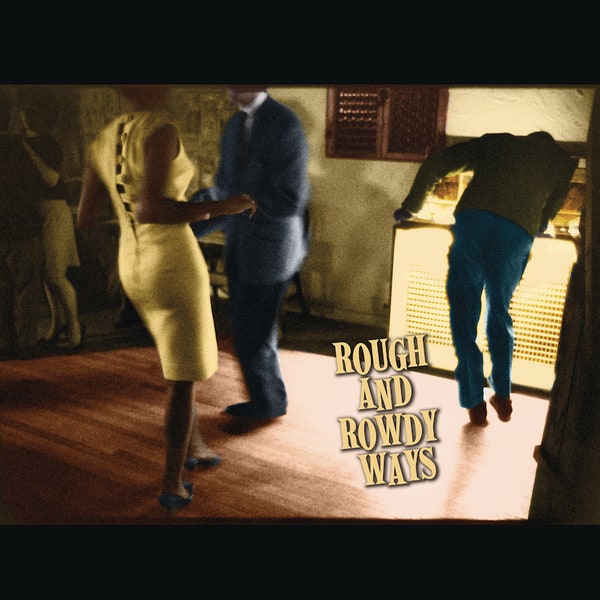
6. Bob Dylan: Rough and Rowdy Ways. Columbia. Bob Dylan is many things to many people. He’s equal parts chameleon, cipher, conduit, caretaker, comedian, conductor, conspirator, and a cavalcade more of collective descriptors than I have the space to alliterate about here. On his 39th studio album, Rough and Rowdy Ways, Dylan continues to explore the underbelly of the American dream, as observationally sharp as ever — not to mention being backed by a top-shelf band, the kind of musicians equally adept at taking up a residency at a smoky jazz-blues club as they are at going for the grander gestures in a fan-filled arena. Those who continue to eschew Dylan’s latter-day sandpaper vocal croak miss the point, for the bard’s lived-in tone only adds further weight to his subject matter — and don’t think for a moment that any warble or inflection he serves up to us is ever accidental or without purpose. Rowdy opener “I Contains Multitudes” lays out the depth of Dylan’s M.O. like the O.G. folk rapper he’s always been, while “False Prophet” swings with a growling back-alley groove-twang, of which Keith Richards would most wholeheartedly approve. “I just know what I know,” Dylan sneers matter-of-factly, and who could argue with such a learned, lived-in proclamation? The crux of the Rowdy matter is most definitely the 17-minute history-lesson epic “Murder Most Foul” (which fills the entirety of Side D of the double 180-gram vinyl release and is the only track on the second disc in the CD package). “Murder” is ostensibly about the JFK assassination, but it goes much deeper than that. It’s a mini aural movie about the intertwined vortex of many key cultural shifts of the latter half of the 20th century as proffered by its most fervent, fevered, shrewdest observer — all done in perfect Dylan speak-sing style, a septuagenarian poetry slam by one of the absolute masters of the artform. Rough and Rowdy Ways contains multitudes of outright insights, and I for one can’t wait to hear whichever way the wizened wind of Dylan blows next.
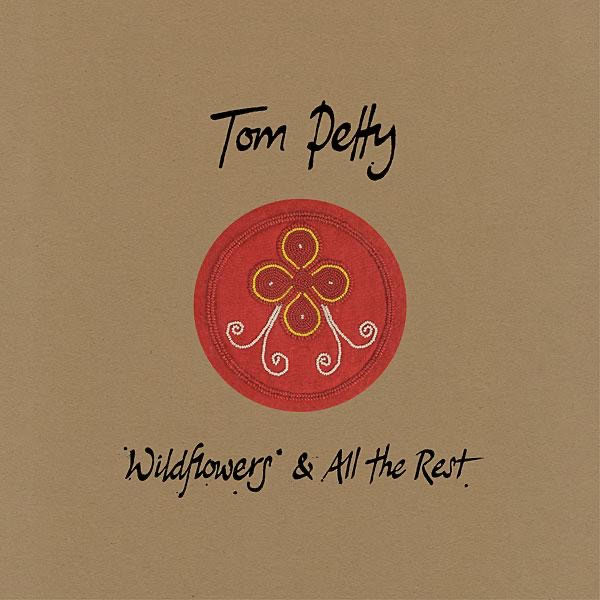
5. Tom Petty: Wildflowers & All the Rest. Warner Records. The late, great Tom Petty’s dream-blueprint for his November 1994 solo masterpiece has finally been turned into action over a quarter-century after its original release, thanks to the multi-configured options available for what’s now being called Wildflowers & All the Rest. And while I am indeed partial to the no-longer-buried treasures found and re-found on both the Super Deluxe 5CD and the mondo Ultra Deluxe 9LP configurations, I’m most enamored with what I consider to be the Wildflowers Holy Grail — namely, the absolutely stunning and wholly immersive Dolby Atmos mix (currently an exclusive for Amazon Music HD subscribers) helmed by Ryan Ulyate, Petty’s longtime righthand engineering man. “Wildflowers is very, very spare, you know? It’s a real spare record,” Ulyate told me back in October. “It’s obvious when you have a track that has a lot of stuff going on where it’s like, ‘Well, great; I’ve got all these speakers. I can put all this stuff in it.’ But in a spare track, does it make a difference? As it turns out, it does. The intimacy is still immersive, and in a weird way, it makes it more intimate.” In Atmos, “Wildflowers” puts you right in the Garden of Eden, thanks to Michael Kamen’s subtle, George Martin-esque arrangements for the orchestra that now resides in the clouds. Meanwhile, Steve Ferrone’s whip-smart drumming anchors the 360-degree trajectory of “You Don’t Know How It Feels,” and Mike Campbell’s soaring guitar solo, along with its own heavenly orchestral backing, take “It’s Good to Be King” into the next stratosphere. Other highlights (which can be enjoyed by one and all via their stereo mixes) include the stripped-down, alternate version of “Don’t Fade on Me,” the newly rescued mix for “Hung Up and Overdue” (now with the late Beach Boy Carl Wilson’s angelic background vocals much more prominent), and the acoustified “Cabin Down Below” (with keyboard ace Benmont Tench’s piano work no longer interred). The wholly revamped and revitalized nature of Wildflowers & All the Rest takes us all to the higher place Petty had envisioned for it in the first place — and beyond. It’s good to be king, indeed.
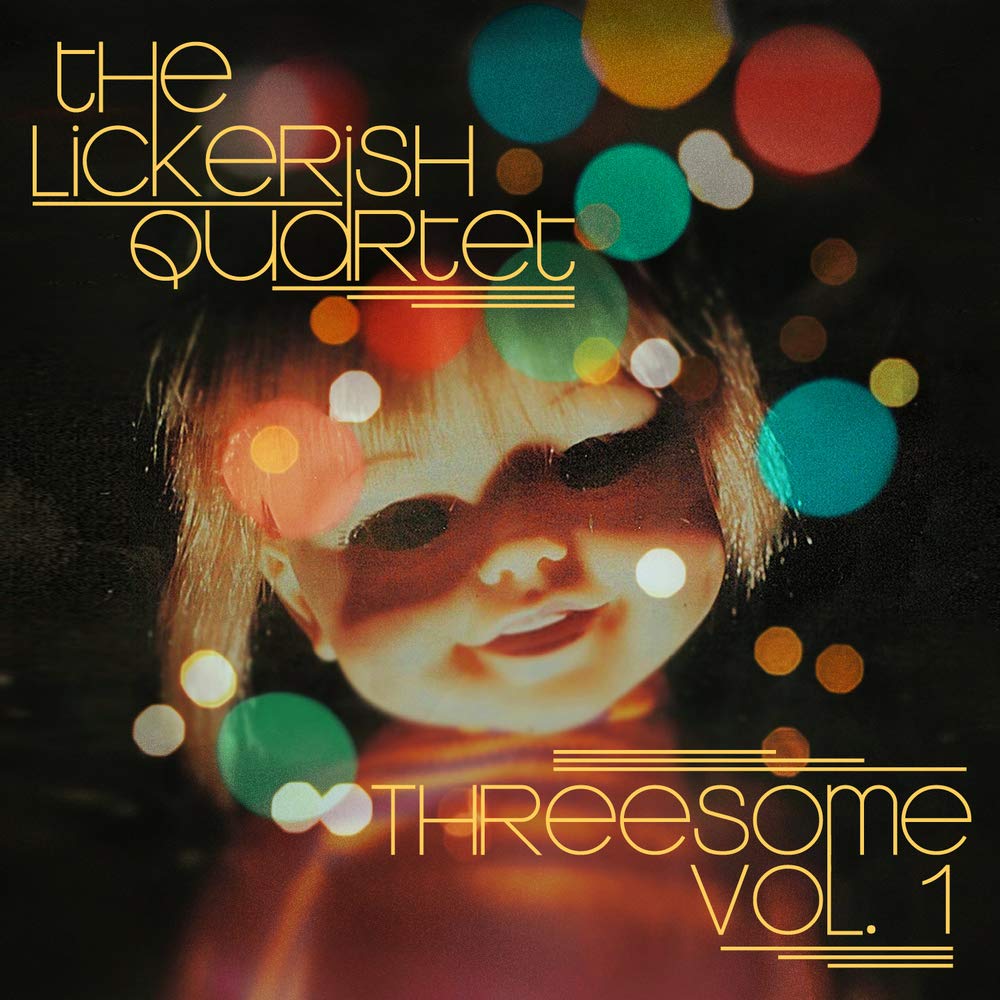
4. The Lickerish Quartet: Threesome Vol. 1. TLQ/Label Logic. Eagle-eared listeners will instantly recognize the shared pedigree that vocalist/keyboardist Roger Joseph Manning Jr., vocalist/bassist/guitarist Tim Smith, and vocalist/guitarist Eric Dover all have together by way of the melodiously fruitful time they spent together in the ’90s alt-rock cult-favorite collective known as Jellyfish. After many years in the interim of supporting the visions of other artists, these three clever lads eventually reconvened on their own to create something they could truly call their own, and hence, The Lickerish Quartet were thusly born. The undeniable chemistry of this wholly in-tandem troika can be found within every sonic pore of the four songs that comprise the cheekily named Threesome Vol. 1. From the mischievous harmonic invitation of “Fahdoodle” (a Dover-driven look at how to rekindle the fires of a long-entrenched relationship) to the folk-tinged uplift of “Bluebird’s Blues” (featuring Mellotron samples and a 3D feel born from a musical bed Manning initially came up with back in 1988) to the twangy lamentation of “Magic Number” (a Smith-penned rumination on how to deal with the sad circumstance of two people who have drifted apart after putting the blame for their dissolution on a number that signified the last straw) to the cosmic muscle of “Lighthouse Spaceship” (a quite heady 6½-minute mind/space trip, to say the least), Threesome Vol. 1 confirms the communal strengths of a trio of songwriters who have clearly retained an intuitive sense of knowing exactly how to elevate the sum of each other’s musical chops. “All these years later, it was like picking up where we left off in many ways, and dusting off the cobwebs,” Manning told me back in February. “Once we started going, it went pretty fast. Ultimately, the songs go on their own journeys, but I also think our collective vocal sound puts a stamp on all of them, no matter who’s singing lead. That’s what really joins it all together.” Vol. 2 is set to beam our way in January 2021, and, given the inherent, aurally seductive nature of Vol. 1, I for one can’t wait for The Lickerish Quartet’s next liftoff.
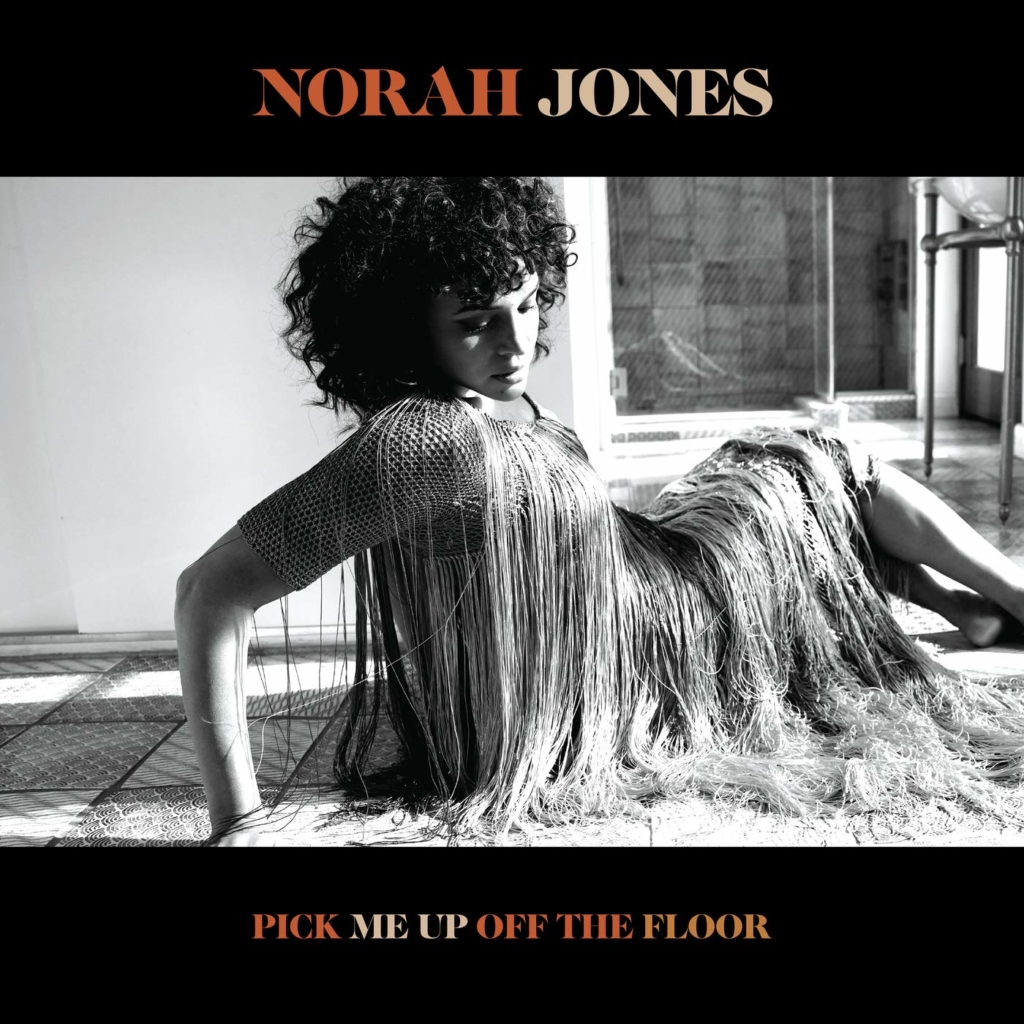
3. Norah Jones: Pick Me Up Off the Floor. Blue Note. Marrying catchy pop melodies with keen jazz constructs is but one of piano prodigy Norah Jones’ many fortes exercised in full across all 45 minutes of Pick Me Up Off the Floor. Jones has often worn her introspective sensitivity on her sleeve, and the album’s underlying theme of longing for connection in a disconnected world carries added weight in our collective pandemic-centric mindset. The perfect aural table-setting comes via the opener “How I Weep,” a veritable blueprint of Jones’ vocal-delivery mastery matched with the just-right minimal accompaniment of piano and strings. Each syllabic selection is no accident, either. The breathy nature of the verses and certain extended vowels sharing adjacent space with the way Jones likes to linger on the “s” both within and at the end of specific words make it feel like she’s sharing her deepest, darkest secrets in broad daylight. Meanwhile, the uplifting piano break in “Say No More” and the pervading resilience of “I’m Alive” each inject a tone of hope amidst the ever-present melancholy. A less abstract Astral Weeks for the here and now, Floor is further proof of how Jones continues to mop up the competition with unequaled style and grace.
“I’m Alive” YouTube link: https://www.youtube.com/watch?v=Hjv2mxOiej4

2. Secret Machines: Awake in the Brain Chamber. TSM Recordings. After a decade in limbo, Dallas-bred alt-rock cult favorites Secret Machines return with an emotionally charged and sonically forceful fourth album. Building on the kinetic flavor of their haunting 2004 debut Now Here Is Nowhere, Awake in the Brain Chamber is a volume-challenging mesh of fiery guitar, evocative keyboards, and propulsive drumming. It’s a fitting homage to their onetime bandmate guitarist Benjamin Curtis, who left the fold in 2007 and sadly passed away from lymphoma in 2013. Working on and off for 10 years, surviving bassist/keyboardist/vocalist Brandon Curtis (Benjamin’s older brother) and drummer Josh Garza honed eight songs that blend unavoidable melancholy with a fierce drive to plow forward. Aptly named opener “Let’s Stay Alive” crackles with the full force of Garza’s muscular drumming — his skinsmanship is on par with that of Smashing Pumpkins’ heavyweight kit-hitter Jimmy Chamberlin — while Curtis’ dreamy vocals serve as a 21st century bridge between the Machines’ inherent shoegazing tendencies and unabashed space-rock heroics. “Everything Starts” sews in sinewy guitar accents from the late Benjamin Curtis, and the guttural “Talos’ Corpse” teems with defiant resolve. Brain Chamber is a welcome reawakening from a long-lost band not yet ready to sign off on their final chapter.

1.Gord Downie: Away Is Mine. Arts & Crafts. The late, fully completely great singer/songwriter/poetic auteur Gord Downie made so much beautiful, heartfelt music over his tragically cut-short career — music that continues to personally impact my daily listening life in so many cherished and deeply soul-rooted ways. So, in the midst of navigating the most challenging and unsettling year of 2020, being able to hear a collection of ten previously unreleased new songs from brother Gord, an artist whom I was honored to also call a good friend, has truly been a profound and treasured aural gift from the great beyond. Indeed, the ten tracks that comprise Away Is Mine whisk us headlong into a most magical, mystical, minimalist journey through Gord’s innermost thoughts as captured in the studio near the literal end of his life, seeing as they were all cut across four days in July 2017, just three short months before his untimely passing from glioblastoma that October. Each Mine song is purely and perfectly delineated via sparse, supportive arrangements courtesy Gord’s chief collaborators, acoustic guitarist/bassist Josh Finlayson and in-sympatico producer/mixer/engineer Nyles Spencer. From the despairing swagger of “Useless Nights” to the echo-drenched too-self-aware mantra of “The Least Impossible” to the sweet sayonara serenade of the final track, the oh-so-aptly titled “Untitled,” Mine is all manna, made all the more special by the decision to include the acoustic versions of each song on a second disc (or second LP, if you choose to enjoy the album on wax — which you should). “He was looking to be inspired, and he was looking to inspire. That was part of the collaboration process with Gord,” Finlayson told me of the Mine sessions back in October. Added Gord’s youngest brother and the album’s executive producer, Patrick Downie, “What will maybe become part of Gord’s musical legacy is that he was very agile, as he would say, or very chameleon-like in that he could sing many different styles of songs. Who knows what we would have seen from him in the future?” Who knows indeed? Thankfully, Patrick also told me the Downie vaults have so much more of Gord’s recorded legacy to share with us all in the coming years, and that Away Is Mine is merely the opening salvo for a litany of great music to come. Thing is, Gord Downie’s music isn’t just mine, or yours — it belongs to all of us, now and forevermore. And as Away most ably shows us, this is the way.
“Untitled” YouTube link: https://www.youtube.com/watch?v=cwCFcpI_DfU
Want to know more about Gord Downie and the No. 1 Album of 2020? Read my fully complete deep-dive interview with Patrick Downie and Josh Finlayson about the making of Away Is Mine, right here on The SoundBard.

